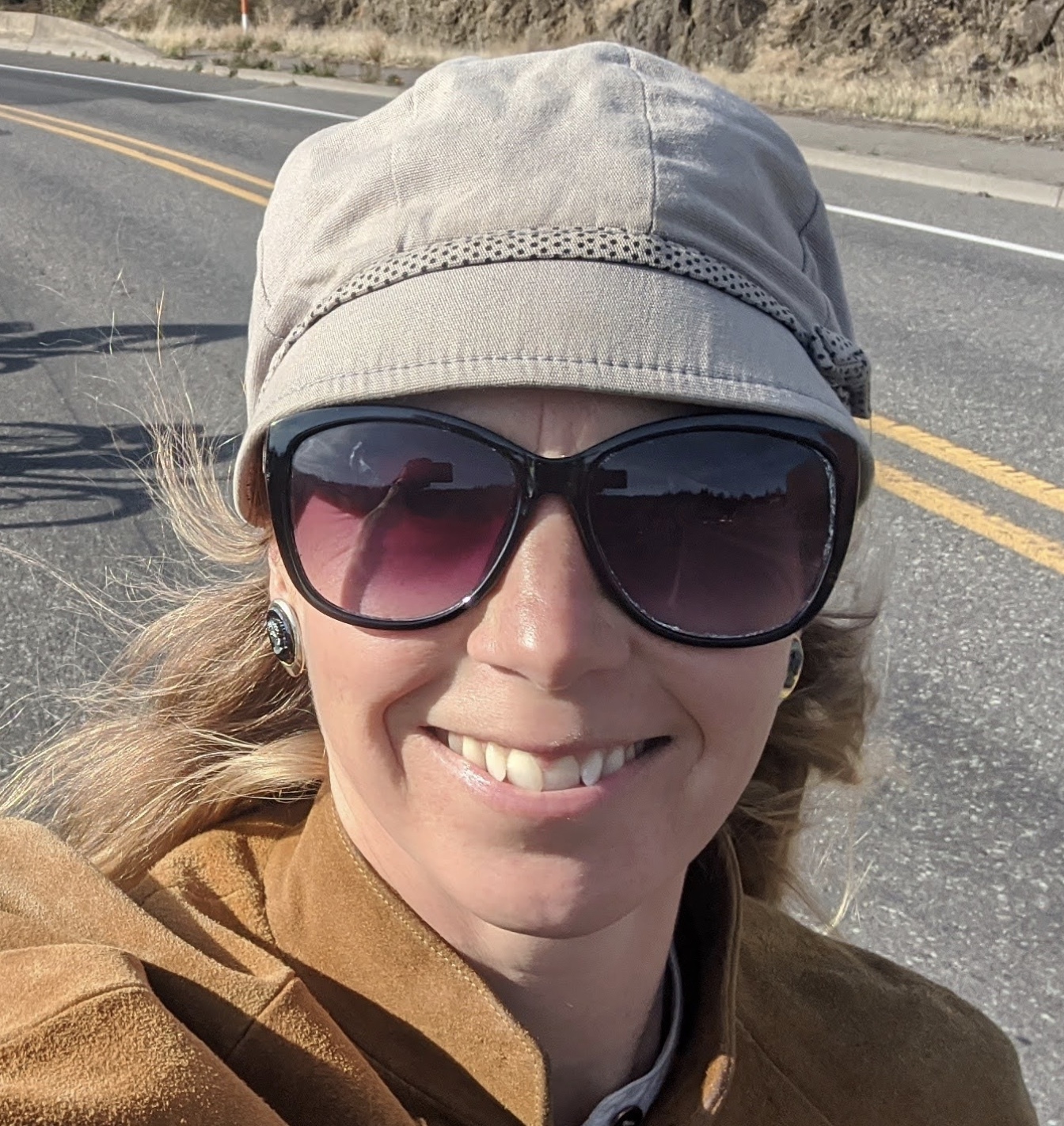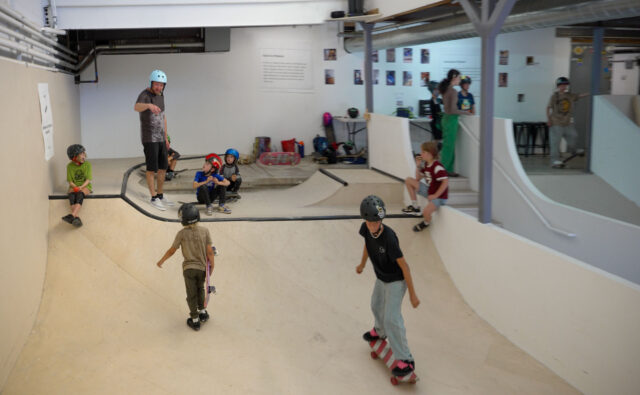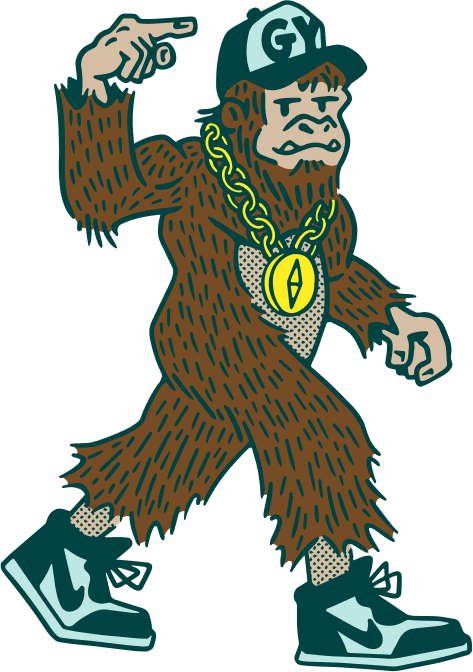With Great Power Comes Great Responsibility: The E-Bike Edition
At Gorge Youth, we’re all about helping kids and families get where they need to go—safely, actively, and independently. That’s why we’re thrilled to highlight the work of Megan Ramey, the Safe Routes to School Manager for Hood River County School District and the creator behind Walk and Roll Club. Megan has long been a vocal advocate for safer infrastructure, biking education, and youth mobility. She combines a deep understanding of transportation systems with a passionate commitment to empowering kids to move freely through their communities—whether by bike, scooter, or foot. Through her Safe Routes work, she partners with city and county leaders to expand sidewalks and bikeways, leads bike safety instruction in local schools, and builds a culture where choosing active transportation is both safe and joyful.
June 18, 2025
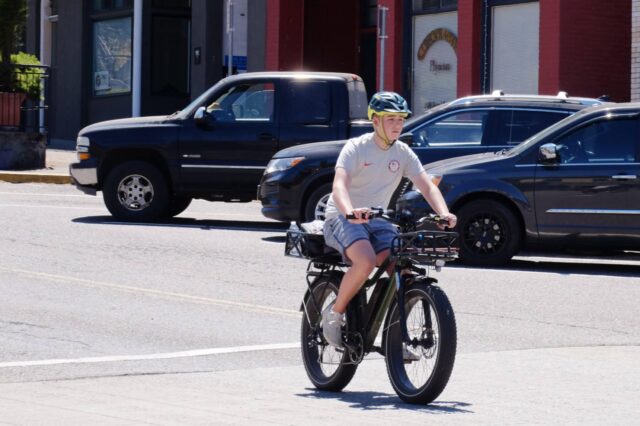
E-Biking: with great power comes great responsibility
In the blog post below, Megan tackles a timely and important topic: E-bikes and youth riders. With more families and students turning to electric bikes as a practical, eco-friendly transportation option, it’s crucial that we all understand the responsibilities, risks, and realities that come with this powerful mode of travel.
Read on as Megan shares insight, guidance, and resources for caregivers navigating this new frontier—and why teaching kids to ride responsibly may be just as important as teaching them to drive.
Parents: In the current legal scenario, the buck ultimately stops with you to keep our children safe while riding E-bikes.
Some families in Hood River County have discovered that bringing students to school by E-bike is fun, and feels like a red carpet to drop-off your kids at school compared to waiting in a line of cars. Older students have discovered that E-bikes give them independent travel to school and afterschool activities, which frees up caregivers to work. There is no doubt that E-bikes are life-changing in hilly communities like Hood River County, replacing cars on the street with happy humans.
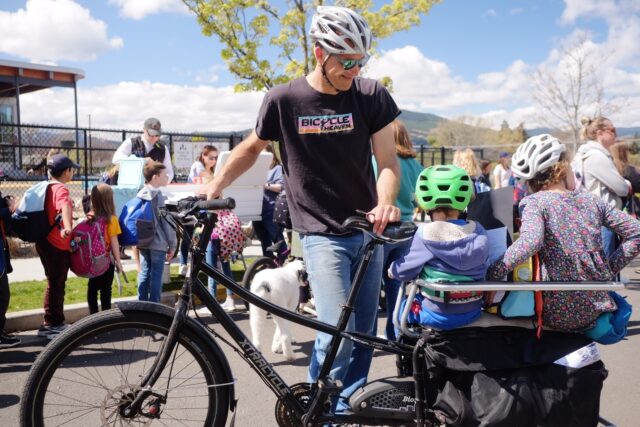
Spiderman’s Uncle Ben said, "With great power comes great responsibility." E-bikes are powerful and heavy. A car or truck weighs 5000 pounds on average, so learning to drive is incredibly important to protect the passengers and other street users. While a typical E-bike pales in comparison at 50 pounds, biking education is of the same importance. Even more important is safe infrastructure for (E-)biking. As the Safe Routes to School Manager for the Hood River County School District, I work with the City and County to install a network of bikeways and sidewalks while providing biking education in PE classes for elementary and middle school students.
Why don’t kids just ride regular bikes!? E-bikes are cheating!
My family moved here in 2016 from Boston and after one month of navigating the Hood River hills to buy groceries, run errands and carry our then 6-year-old, we sold our two heavy cargo bikes in favor of the electric versions, a Pedego with a Burley trailer bike attachment and and Urban Arrow bucket bike. E-bikes are not cheating. To qualify this, I race cyclocross and have relatively high athletic ability. I challenge anyone to ride an acoustic (non-electric) bike daily between the waterfront and The Heights, with kids and stuff and see how soon you start making excuses to take the car. If anything, driving a car is cheating. It is an ableist perspective to insist that people need to ride “regular” or “normal” bikes. Between carrying stuff, navigating hills or having one of many possible physical impairments, an E-bike makes riding accessible for everyone.
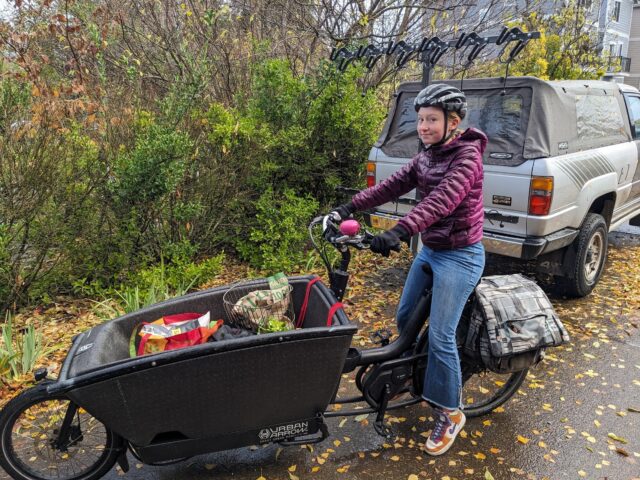
Youth 10-15 years old, and their parents especially, love riding E-bikes because they can get where they need to go whether it’s for sports, activities or to hang with friends. This used to be normal in America but hills and vehicle traffic had all but eliminated this in Hood River. My own 15 year old daughter gets herself to high school and all her engagements every day. It saves our family a ton of time and, fingers crossed, she doesn’t yet want or need to get a driver’s license.
Motor vehicle crashes are the number one cause of death of teenagers in America. Climate change is directly connected to our vehicle emissions. “People are in the best mood while they are bicycling compared to any other way to get around” explains Eric Morris, assistant professor at Clemson and the study’s lead author. Perhaps it’s a good thing to give rising teenagers a more healthy transportation option like E-bikes.
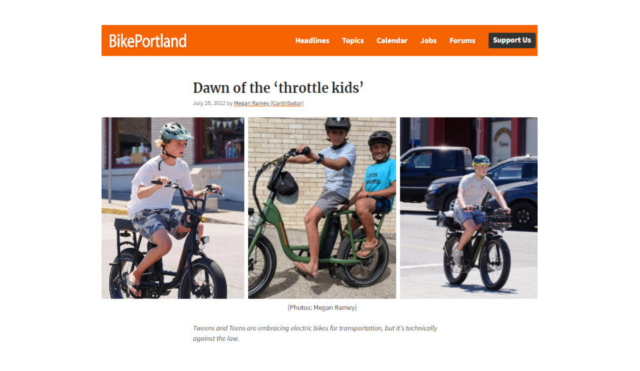
Why do E-bikes give us heartburn?
From the beginning of the E-bike boom, I have observed teens riding them. I clearly remember the first time. I was standing on Cascade Street downtown. Two teenagers, a rider and passenger, were on a throttle bike (class 2) and my brain raised a triumphant fist in the air thinking of how normal this would be in The Netherlands. I was, however, a little worried about their safety. After seeing multiple teenagers riding E-bikes - sometimes safely and sometimes less so - I wrote “Dawn of the Throttle Kids” in 2022 in Bike Portland. I was afraid that communities in Oregon would use the few bad behaviors by youth riding E-bikes to create public backlash. Sadly, it was a little too on the nose for predicting the future.
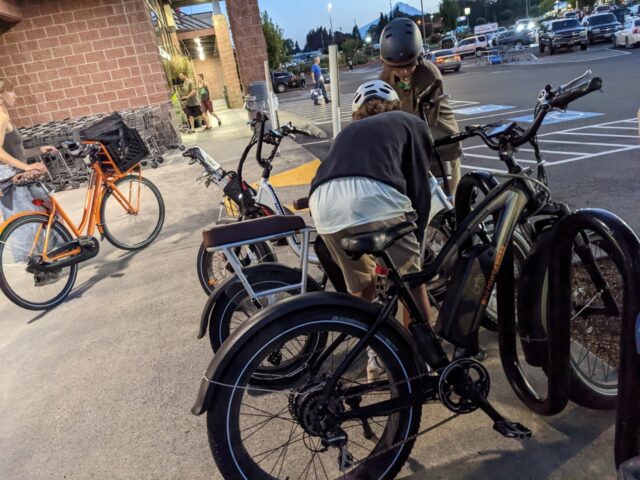
So, why the backlash?
From observation, talking to friends and having the public reach out to me in my role, there are a few reasons by youth riding E-bikes is unsettling to people:
- More riders because E-bikes are so functional and fun, there are more people biking.
- No bikeways - from a historical rural planning perspective, our community has always reverted to a small town “share the road” or “kids can ride on the sidewalk” mentality, so investing in dedicated bikeways was never a priority. Now people driving must share the road with masses of people biking.
- Windshield bias - This is really a thing. I get around daily by biking. When I drive in Hood River, I am more judgmental of people biking, or it seems more dangerous. If you find yourself judging, picture yourself biking and ask if you would feel the same way. Remember to keep calm and give them space. You have the 2-ton vehicle.
- Mountain biking culture has raised cowboys (and cowgirls). Decades of bike education for youth in Hood River have been focused on risk taking, “sending it” and being individualistic. Quite oppositely, transportation biking is about being risk averse and being community minded. When you see boys hot dogging on E-bikes, picture them on a mountain bike trail - they are a product of their environment.
- Sidewalk riding - with little to zero bikeways, parents tell their kids to ride on the sidewalk because it feels safer. In a few cases like 12th Street in The Heights or to navigate intersections, it is safer. But it also takes space or creates a dangerous situation for people walking or on mobility devices like wheelchairs and strollers.
- Throttling, aka not pedaling - this is a tricky one to unpack but it causes me the most heartburn because of the public relations nightmare. While some people cannot physically pedal or start without a throttle on a hill, most kids are able bodied. Shifting down before stopping is a dwindling art form and until recently, throttle E-bikes (class 2) were the cheapest, thanks to the brand Rad Power. The public sees kids throttling and the general response is how is it legal for kids to ride mopeds? I get it. In my opinion, an able-bodied child under 16 should be restricted to class 1, pedal assist or have to take a special course certifying them.
- Toy motorcycles - these are NOT E-bikes. See below.
- Lack of education - the Safe Routes to School program started in 2022 with all elementary and middle school students receiving education in physical education class. I am playing catch up, teaching everyone “how to swim” or ride confidently and it will be 4 more years until I develop a transportation cycling certification for middle schoolers. Our first priority is getting everyone on the same level and then we can focus on the numerous laws and etiquette for biking in the street. Out of all the schools, Hood River Middle School receives the most education around laws focusing on stop-as-yield, hand signals, sidewalks and basic etiquette of riding on the right side. But there is no time to test the students with a huge span in ability level from non-riders to “I know everything about biking because I ride down Bad Motor Scooter” types.
- Double riding - I have watched kids transport each other and equipment like golf, lacrosse, fishing and more. This would not happen without an E-bike and is an incredibly good thing for their independence and our community. “Dinking” or “double riding” is an everyday occurrence in The Netherlands and is indicative of a healthy biking culture. It’s incredibly efficient to transport people by bike, reduces vehicle congestion and frees up valuable parent time. The public heartburn sets in when 2 or 3 kids are on an E-bike, going 20+ mph down a hill with a “death wobble” or out of control weave. This is supremely dangerous considering the universally insufficient brakes on Rad Power bikes, which recently claimed the life of a 12 year old passenger named Molly, when she went for a ride with her friend in Pacific Palisades, LA. Every parent should read Molly’s Last Ride, an article about her death and the parents’ lawsuit, written by my friend, Peter Flax.
- No helmets - double riding, no helmets and throttling seem to be the top 3 causes of public heartburn. Children under 16 are required to wear a helmet by law and the police can issue a $25 ticket for this offense. Parents, if your E-bike can carry passengers, put an extra helmet on the bike for youth to carry their friends safely.
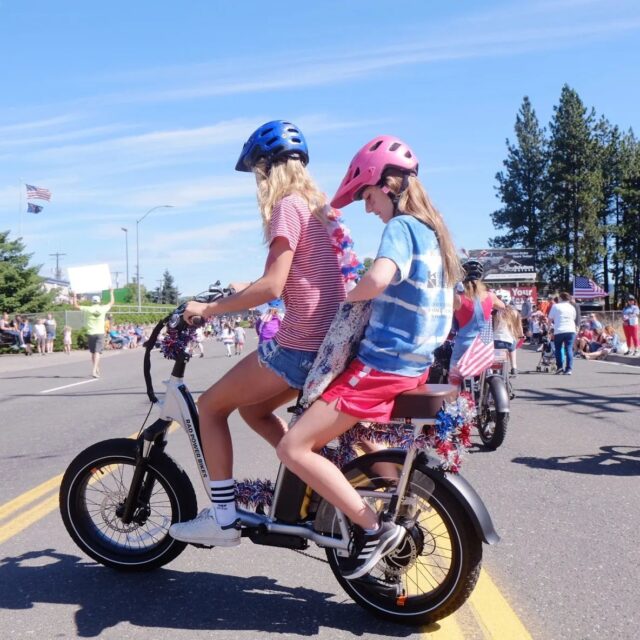
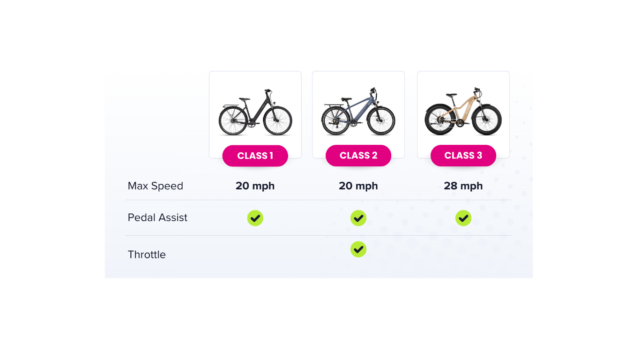
E-Bike Classes and “Toy Motorcycles”
There are 3 classes of E-bikes based on their max speed and whether or not they have a throttle. Take note that any mobility device that you purchase online, may be marketed as an E-bike, but if it goes faster than 28 miles per hour, it is out of class and will require a motorcycle license.
Toy Motorcycles

There is no classification for this type of device so we educators call them “toy motorcycles”. They typically go faster than 30 miles per hour, which is by definition, a motorcycle. They may or may not have pedals and they definitely have throttles. These type of bikes require a motorcycle license and should not be given to children under 16, especially new riders.
NOTE: this is the one bike that law enforcement can issue a ticket for. More on that below.
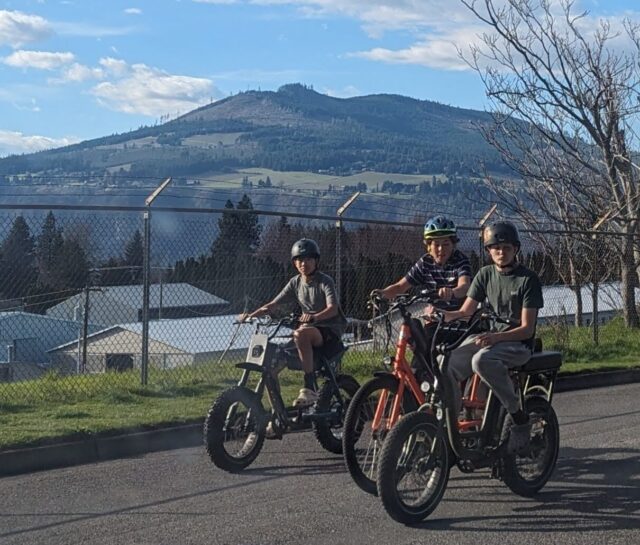
Modified E-bikes
Class 2, throttle E-bikes, are the easiest to modify to go faster than the law allows, which is 20 miles per hour. There are numerous Youtube videos and even beautifully designed pamphlets that come with online sales bikes, instructing people on how to increase the max speed. This is dangerous as higher speeds increase the severity of crashes.
NEW E-BIKE LAW COMING!
I am a member of the Oregon Micromobility Network, composed of policy leaders, practitioners, and advocates who are working to make micromobility safe, accessible, equitable, and fully integrated into Oregon’s transportation system. I represent the perspective of youth education and childhood mobility in a hilly, rural community. For the 2025 legislative session, we advocated for a law that was in line with our neighbors of California and Washington, legalizing all ages on class 1 and class 2 E-bikes. Our suggestion was to legalize class 1 for middle schoolers or 10+ years old. This would enable education for ages that are riding E-bikes regardless of what the law.
The current E-bike law in Oregon was passed in 1997, well before E-bikes became a popular transportation choice, and it arbitrarily restricts E-bike driving to those 16 years and older. Because no lawmaker predicted the future of youth riding E-bikes, there was no enforcement measure tied to unlawful riding. Now we have a broken system where the law doesn’t represent the transportation needs of our youth. They will continue to ride no matter what. Myself and other educators cannot legally train them on riding E-bikes, and the police cannot enforce a law that has no penal code structure.
New law legalizing 14+ year olds for late 2025
Oregon House Bill 3626-4 has moved out of the Joint Transportation Committee and is headed to Ways and Means. If it moves forward, a 14 year old will legally be able to ride an E-bike, E-scooter, one-wheel or E-skateboard in September 2025.
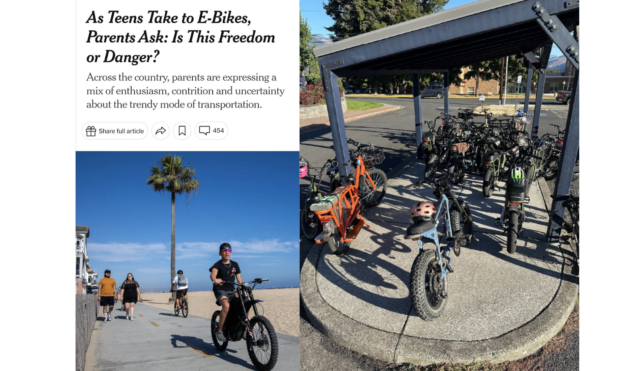
Tips for Parents
Until we see meaningful policy change allowing middle schoolers to be educated and enforced, here are the current laws and tips for caregivers to keep their kids safe:
- Online E-bike education: E-bike Sense was founded by a mom in Hermosa Beach
- 16 years old (or 15 with a learner's permit) is the minimum age to ride an E-bike in Oregon
- Ride an acoustic bike with your kids on the street before they ride an E-bike. Review the laws below with them.
- Youth, 5th-8th grade can join the 80s Walk and Roll Club to learn transportation etiquette in a fun and social way!
- Youth, kindergarten to 5th grade can ride with their classmates to school on Walk & Roll Days, 5 times a year at all the elementary schools!
- Review other E-bike tips from the birthplace of Safe Routes to School in Marin County!
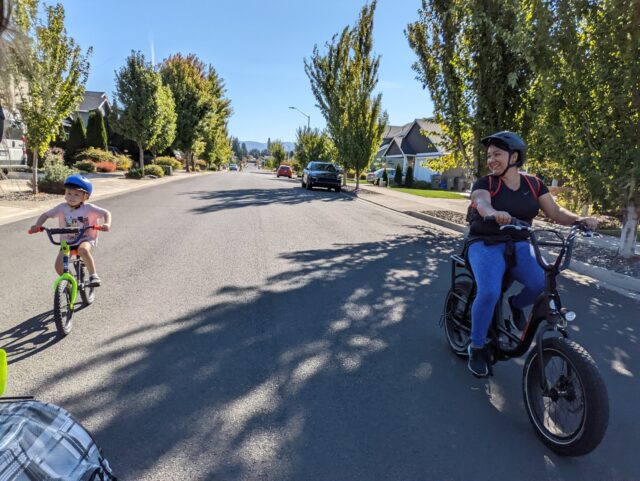
Important Laws
- Sidewalks - there are 2 times when biking is restricted from the sidewalks: 1) business districts and 2) E-bikes. Obviously we have a lack of bikeways so riding on the sidewalk feels safer. Please tell your kids to respect and go slow or walk their bikes around people walking.
- Crosswalks - when it’s legal to ride on the sidewalk, you can ride in the crosswalk as long as you enter the crosswalk at walking speed and yield to people walking.
- Stop-as-yield - As of 2020, Oregon has a new law that enables people biking to use their momentum while following common sense. For stop signs or flashing red lights, people biking can treat them as a yield, checking for traffic and slowly rolling through.
- Helmets - under 16 years old, you are legally required to wear a helmet, which can diminish the severity of a crash when it happens.
- Lights - prevent crashes from happening by making your bike visible at night, and make riding at night much more enjoyable!
- Hand Signals - using turn signals can save a life. We drivers and bikers should all be signaling intention to other people biking, walking and driving round us.
Another great resource: https://electrek.co/2025/07/20/if-you-think-electric-bikes-are-bad-theres-a-much-bigger-menace-hitting-our-roads/
More important laws can be found here: https://www.walkandrollhoodrivercounty.com/about

